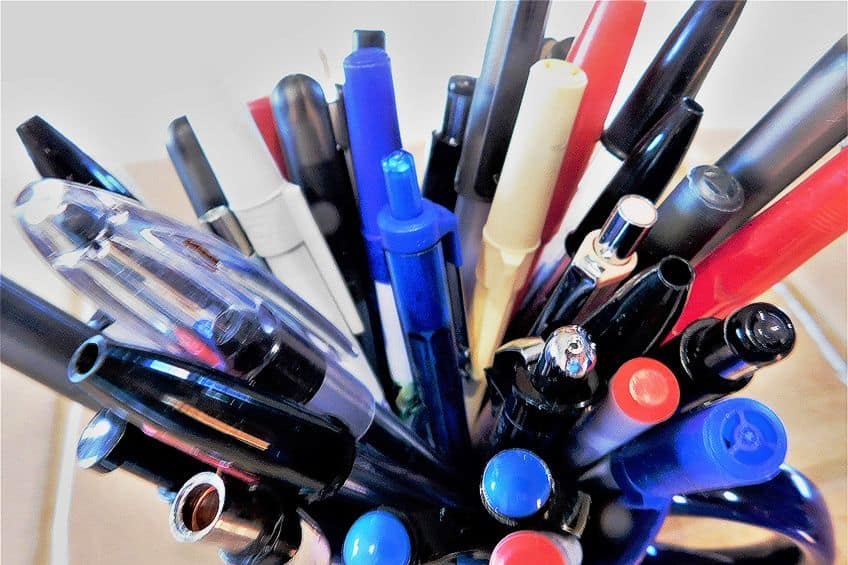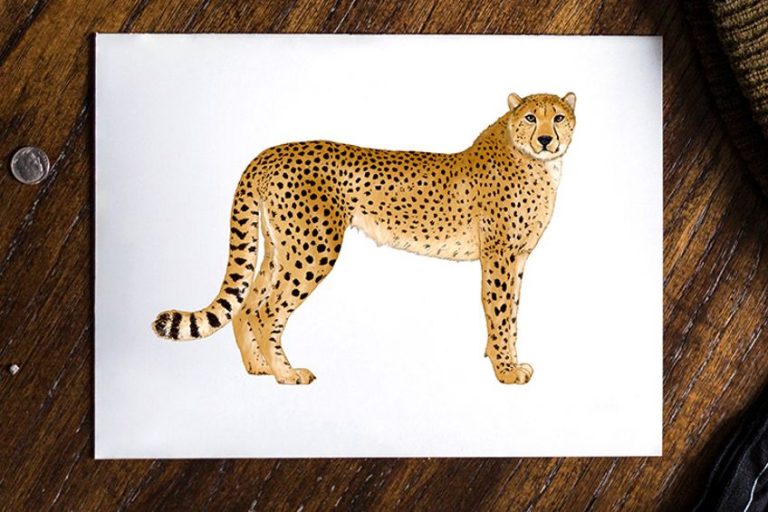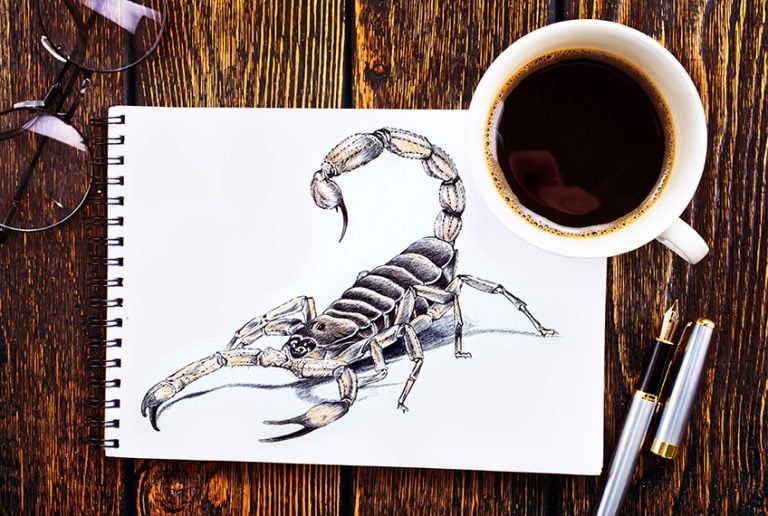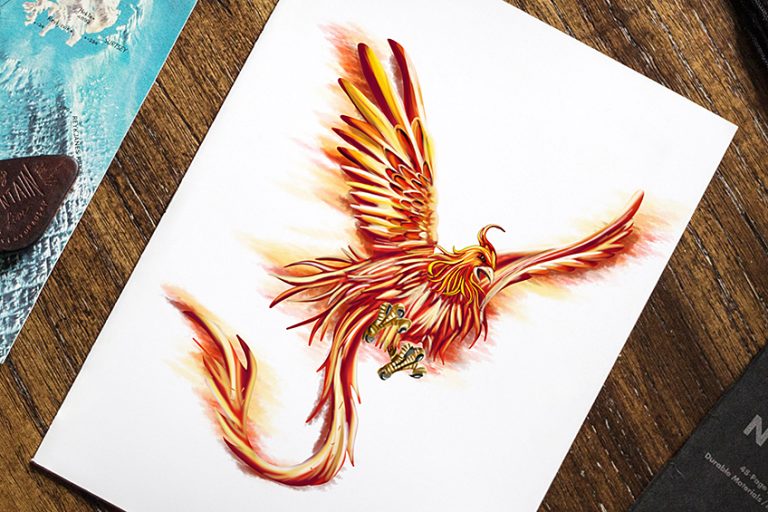Is Pen Ink Bad for Your Skin? – Using Pen Ink on Your Skin
It is not often that someone would draw on their skin with an ink pen, but maybe you remember doing it at school when bored. When you are not looking, young children can also find a pen and start drawing on their skin. Whatever the case may be, is pen ink bad for your skin? Read on to discover the answer to this question.
Table of Contents
What Is Pen Ink?
You can describe pen ink as being a type of substance, which can come in different forms, that is used for various purposes like drawing, writing, or printing. Depending on the type of ink, it can contain different components including pigments or dyes, solvents, resins, surfactants, and lubricants, among other ingredients. The ingredients in a specific ink can vary from product to product. Let us first have a look at the various types of pen inks.
Types of Pen Ink
Even though technology has given us computer Word documents and other ways of communication, pens are still used in everyday life. Not only at home or work but also in many different industries that use ink. Some of the major types of ink include the following, the top two being the most common or well-known.

- Pen ink
- Printer ink
- Tattoo ink
- Adhesive ink
- Fluorescent ink
- Phosphorescent ink
- Edible ink
- Invisible ink
All of these inks have a purpose, and most of them are used in various industries, even invisible ink. However, our focus is on the pen ink, so let us take a closer look at the different types of pens you can get, and how they are different from each other. Ink pens can either be water-based or oil-based and can also contain additives to create a certain color.
For example, blue pens contain phthalocyanine blue, while black pens contain carbon black color.
Ballpoint Pens
The ballpoint pens usually use an oil base that is mixed with pigments and dye, which is then suspended in a mixture of fatty acids and oil. The ink is fast drying and can come in a variety of colors, of which the most common are blue, red, and black. The one minor disadvantage of these pens is that they do tend to smudge a little, especially on smoother paper surfaces. The ink should be thick enough to be able to smoothly exit the pen nib.
The ink is dispensed through the pen and over a small metal ball, which is usually made from brass, steel, or tungsten carbide.

Dip Pens
These pens are usually water-based, which are mixed with dyes and are quite thin in consistency. The ink tends to fade over time and often comes only in black. When working with dip pens, it is easy to smear the ink or leave drops as you work.
Fountain Pens
These pens are also water-based and are combined with dyes for color. The dye is also mixed with surfactants, to help with the easy flow of the ink on the paper surface. This type of ink takes quite a while to dry and commonly comes only in black. Unlike dip pens, fountain pens will not leave drops behind, unless there is something wrong with the nib. You should purchase the proper ink for your particular purpose.
If you use other types of ink in a fountain pen, it could cause damage.

Rollerball Ink Pens
Again, these are water-based and can be mixed with dyes or pigments. The ink is quite thick and will easily saturate the paper. There are numerous colors available for you to purchase. The ink also dries fairly quickly but dries slower than the ballpoint pen ink. These pens produce finer lines and write more smoothly when compared to ballpoint pens.
Gel Ink Pens
The gel pens are another water-based option that uses pigments. This ink tends to be quite thick in consistency but still tends to smudge or smear easily. There are many different colors available including metallic and neon options. When compared to ballpoint pens, gel pen ink does not last as long.

Components of Ink
The ink you find in different pens can be quite complex, as many ingredients can go into each formula. Each pen is differently designed, so it requires a particular ink. Some pens need more fluid ink, while others have a thicker consistency. Each brand or product can also have its own ingredients, however, there are some basic components that all ink pens contain. Ultimately, the ink you use depends on the pen you use, but all contain at least one colorant and a solvent base. Let us discuss some of the common components found in pen inks.
Pigments and Dyes
The color of the ink comes from the colorant included in the ink, which can be a pigment, a dye, or a combination of both. A pigment is insoluble in water, while a dye can dissolve in water. The red ink comes from the dye eosin, which uses bromine, a naturally occurring element that is added to a fluorescent compound. Pigment inks usually contain white ink that consists of titanium white, and often metallic gold ink that can contain a copper-zinc alloy.
The black ink contains carbon black, which comes from coal and oil. Below you will see some of the major differences between pigments and dyes.

| Properties | Pigments | Dyes |
| Solubility | Unable to dissolve, requires a solvents base or vehicle | Dissolves in liquid without any help |
| Composition | Mostly inorganic | Mostly organic or synthetic |
| Cost | Cheaper | Expensive |
| Binders | Binding agent needed | No binding agent required |
| Lightfastness | Superior lightfastness | Poor lightfastness |
Solvent
This is the liquid to which the colorant is added and can either be water or oil. In other words, the ink can then be water-based or oil-based. When it comes to the oil-based option, the more common oils used include benzyl alcohol and phenoxyethanol. These mix with the pigments or the dye and helps to create a vibrant ink that applies smoothly and dries quickly.
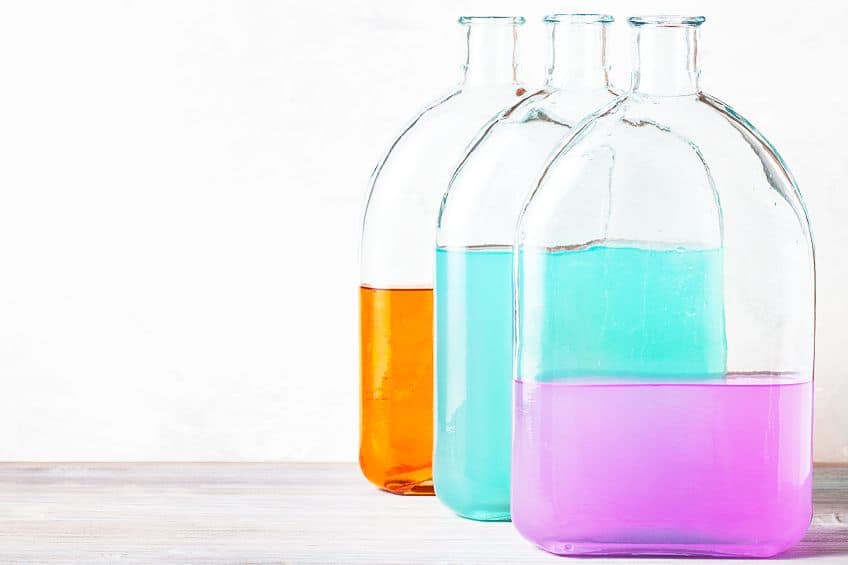
Vehicle
The binding agent helps the pigment dissolve in the solvent. Traditional pigment ink contains these binders, which can be gum Arabic or shellac. Today, you can still get these traditional binders, but the more common binder is an acrylic polymer. These are used mostly in the printing process.
Additives
The basic components of the ink are generally well-known, however, when it comes to additives, manufacturers do not want to divulge their formulas. You will find many different kinds of additives, all providing certain properties to the ink. Additives are added to the ink to help improve the quality and use of the pen. See a few examples below of various additives that can be used.
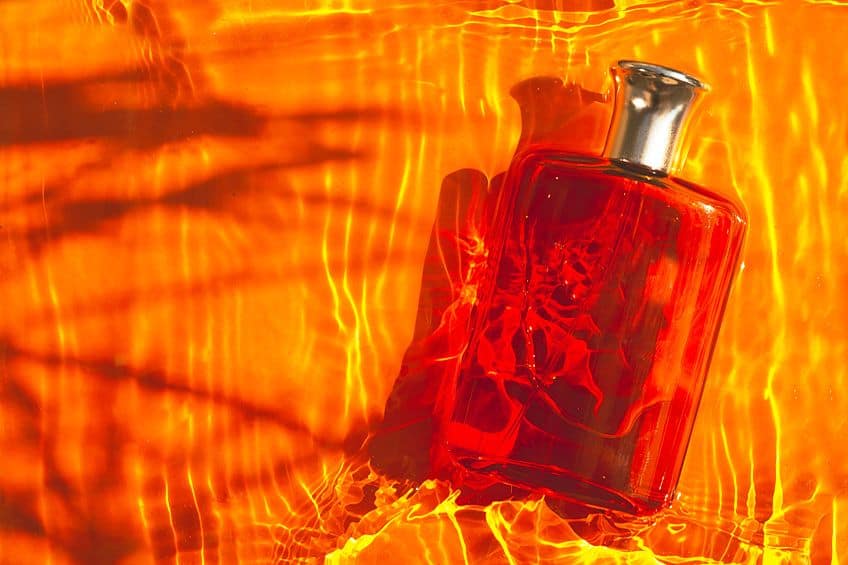
- Some of the additives used include fatty acids, such as oleic acid. This helps to keep the ballpoint lubricated so it does not clog.
- The surfactant known as alkyl alkanolamide, makes sure the ink gets absorbed into the paper before it dries. Surfactants also help with the smooth flow of the ink.
- You can add glycerides, which contain fatty acids. These can be included to help the ink glide smoothly over the paper surface.
- Triethanolamine is a chemical that can help to regulate the ink’s acidity or pH level.
- Some may add clays, which contain silicates that can act as fillers.
- To help make sure the ink lasts longer, inks can also contain fungicides.
- To help control the viscosity or ink thickness, a thickening agent can also be added.
- Some inks may also contain perfume to help cover up any odors.
- Linseed oil, soybean oil, and waxes can mainly be found in color printing inks.
Effects of Pen Ink on the Skin
Ink might be slightly toxic if exposed to it in small amounts, however, it is extremely rare for the ink to cause any life-threatening problems. Pens especially contain only a little bit of ink which is not enough to poison anyone. If you by accident swallow a small amount, simply drink some water. However, if by some small chance, say a child gets hold of a bottle of ink by accident, you might want to call poison control.
The main problem with ink pens is the staining of the skin or even the tongue, which could cause a mild stomach upset.

However, this is also unlikely. If you do draw on the skin and you have sensitive skin, it can irritate. For it to be considered toxic, again, you need to be exposed to a huge amount of ink. Most of the popular pens, like the ballpoint pen, contain non-toxic ink. Also, the manufacturers are monitored and regulated. However, that does not mean you should not be careful. It is still a substance that is not made to be ingested or applied to the skin unless specially made to do so as with tattoo ink and edible ink.
Is Pen Ink Bad for Your Skin?
General pens like the ballpoint pen have non-toxic ingredients and there is little chance of being toxic. Besides inks, you should be more concerned with inks that contain dyes, alcohol, and other chemicals. These are more prevalent in gel pens, highlighters, and permanent markers. With your basic pen ink, the most you need to be worried about is the stain it leaves on the skin, which can be difficult to remove.
Since there are chemicals that can be found in ink, it is possible to get ink poisoning if it gets into an open wound.
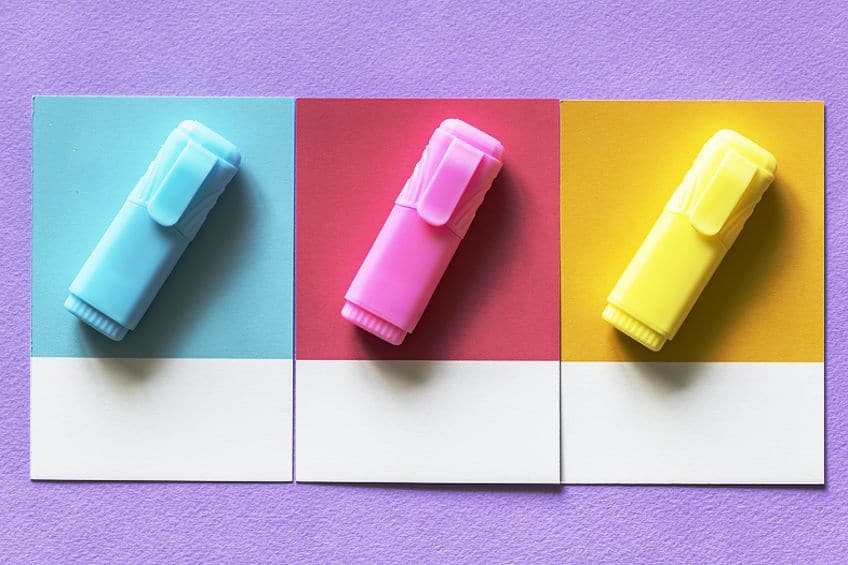
However, this is highly unlikely and might only happen if you ingest a lot of the ink. Whatever the case, ink poisoning can cause vomiting, nausea, and dizziness. In really bad cases, it can even cause seizures and it could even be fatal. Again, this would be an extremely unusual case.
Removing Ink from the Skin
Try to avoid any harsh chemicals to try and remove the stain. Simply use soap and water, and leave the ink stain, which should disappear on its own over a few days. You can try using a bit of rubbing alcohol to get rid of the ink, especially if it is oil-based. You can also try hand sanitizer or nail polish remover. Since you are dealing with solvents, be careful and try to use them in a well-ventilated space.
Also, minimize the contact on the skin, and make sure to only apply to the stained area. Make sure there is no broken skin, as it will sting or burn.
Factors That Influence the Effects of Pen Ink on the Skin
Each pen type is different and has different ingredients. Ballpoint pens are generally non-toxic but are still not made to be used on the skin. You should look at the ink composition and, of course, the frequency of use. The more you draw on your skin, the more substances get absorbed into the skin. However, many have drawn on their skin for years and have had no effects. But it is always best to be cautious. Here are two more factors you might want to consider when using pens.
Types of Pen
We have already mentioned that pens can differ in ingredients from product to product. Permanent markers and highlighters are of more concern, but even though inks from other pens are minimally toxic, they should still be used as intended and not for drawing on the skin. For example, look for xylene-free markers, which can be quite toxic if inhaled or ingested.
Most pen manufacturers are also under strict regulations as to the components they add to pens.

Dip pens use ink that is in bottles, which means this is a larger amount of ink than in a simple pen. This means you should store the ink away safely so that no children or pets can get hold of it. Otherwise, there is not much that can happen with a normal ink pen that could cause harm.
Skin Type
If you do have a habit of drawing on your skin with a normal pen, it should generally not be a problem besides leaving a stain. However, with sensitive skin, it can cause irritation and inflammation. Covering large areas of skin with ink can also have a negative effect, as this reduces the skin’s ability to absorb oxygen. Also, if you have any open scratches or open wounds, this could cause a problem. Even though the ink may be non-toxic, you still do not want any foreign bodies to get into these areas, which can lead to infection.
Even if you do not have a scratch or wound, drawing on the skin can lead to abrasions, which then could be contaminated and become infected. This is possible, especially if somebody else has also been using the pen.
How to Minimize the Risks of Pen Ink on Your Skin
The best option is to not draw on your skin with ink pens. However, accidents do happen, and this can easily be remedied by washing the area clean with soap and water. To avoid any problems altogether, consider using a digital drawing device and tool. This way you do not have to worry about exposure to any type of ink.
Pen Inks and Small Children
You might not be concerned about pen ink on your own skin, but what about if you have small children? You might have seen on a funny video how a little big brother found a pen and proceeded to draw all over baby sister. It might seem funny, but it might also have you a little worried. Kids at school also tend to have a little fun drawing with an ink pen on themselves.
Ballpoint pens are generally safe and should not be a major problem. Even if some ink is ingested, give them a little water, and just keep an eye on them.

If you are still worried, there is no problem with seeking medical advice, just to be on the safe side. If you are worried about pens and your kids, when buying them, choose pens that say they are non-toxic. Make sure to keep all other pens and markers out of sight and stored securely.
Alternative to Ink Pens for Drawing on the Skin
If you enjoy drawing on your skin, some pens are made for this. There are pen markers that are specially made to draw on the skin and are harmless. These markers are usually available in numerous different colors, which can be used to create detailed designs on the skin, and can even be used as a makeup tool or in body art.
Another idea is to use temporary tattoos, which can come in a variety of sizes and designs. These are made to be placed on the skin, so are non-toxic and should not cause any skin irritation.

The tattoos can last for several days before they begin to fade and disappear on their own. You can also easily remove them using a little water and soap. Another alternative is henna, which can be used to draw on the skin. Henna is a natural ingredient that is used to stain the skin and should not cause any skin irritations. However, it is always best to do a skin patch test before using it, as some may contain harmful chemicals. Remember to always read labels.
What to Do If You Experience Skin Problems Due to Pen Ink
So, what if you react to the pen ink? This can cause contact dermatitis, which produces inflamed skin that can become itchy, dry, and cracked. If left, it can also cause an infection that can also lead to redness, swelling, pain, and even fever. So, it is best to see a doctor to get medical advice. The first thing is to avoid whatever is causing the irritation, so avoid writing on the skin completely. If it is only a slight irritation, try to avoid scrubbing the skin when cleaning the area.
Also try to avoid harsh cleansers, or cosmetic creams, which can worsen the problem. When cleaning the area, use warm water and not hot water. You can also try leaving the area exposed as much as possible.

You can visit the local pharmacist who can help you out with what to put on the affected area. They should also be able to advise on what natural remedies are available. However, if the condition worsens or persists, rather go see a doctor. There are also some natural remedies available.
- Simple cold compress
- Oatmeal bath or poultice
- Topical use of aloe vera gel
- Epsom salt bath
Many of us have drawn on our skin with pen ink with no major issues besides an ink stain. On rare occasions, however, ink can pose a problem to some, causing skin irritation or even worse problems. To avoid this, we recommend you use special skin markers that are non-toxic to draw on the skin if you tend to do this often.
Frequently Asked Questions
Is Pen Ink Bad for Your Skin?
Most ink pens, like the ballpoint pen, are non-toxic and pose very little risk if used on the skin, but could still cause irritation to those with sensitive skin. However, different types of inks could also cause irritation or worse, as they are not meant to be used on the skin.
What Can Be Done If Skin Irritation Occurs With Ink Pens?
First, stop using pens on the skin. However, if irritation occurs, try symptomatic relief like washing the area clean and placing a cold compress over the affected area. If the irritation continues or worsens, seek medical attention.
Does It Take Long for Ink to Fade from the Skin?
The ink from a pen should fade by itself over two or three days. To help this, you can also gently clean the area with soap and water and try not to scrub the skin too hard.
Matthew Matthysen is an educated multidisciplinary artist and illustrator. He successfully completed his art degree at the University of Witwatersrand in South Africa, majoring in art history and contemporary drawing. The focus of his thesis was to explore the philosophical implications of the macro and micro-universe on the human experience. Matthew uses diverse media, such as written and hands-on components, to explore various approaches that are on the border between philosophy and science.
Matthew organized various exhibitions before and during his years as a student and is still passionate about doing so today. He currently works as a freelance artist and writer in various fields. He also has a permanent position at a renowned online gallery (ArtGazette) where he produces various works on commission. As a freelance artist, he creates several series and successfully sells them to galleries and collectors. He loves to use his work and skills in various fields of interest.
Matthew has been creating drawing and painting tutorials since the relaunch in 2020. Through his involvement with artincontext.org, he has been able to deepen his knowledge of various painting mediums. For example, watercolor techniques, calligraphy and lately digital drawing, which is becoming more and more popular.
Learn more about Matthew Matthysen and the Art in Context Team.


